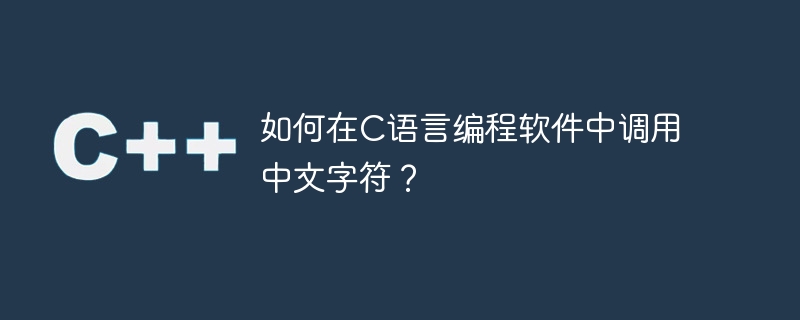

How to call Chinese characters in C language programming software?
With the development of globalization, Chinese characters are increasingly used in computer programming. However, due to the characteristics of the C language, support for Chinese characters was not considered when it was originally designed. Therefore, to call Chinese characters in C language programming software, we need to take some special measures. This article will introduce some common methods to achieve this goal.
Unicode is a universal character encoding standard that specifies a unique numeric encoding for almost all characters in the world. In C language, we can use Unicode encoding to represent Chinese characters. For example, if we want to output the Chinese character "Hello" in the program, we can use the form of uXXXX, where XXXX is the hexadecimal representation of Unicode encoding. That is, use "u4F60u597D" to mean "hello".
The C language provides a special character type wchar_t for representing wide characters. Wide characters can be used to represent Chinese characters. We can use wchar_t type variables in the program to store and process Chinese characters. At the same time, you can also use wide character processing functions to process wide characters. For example, you can use the wprintf function to output wide characters. You can use the wcslen function to get the length of a wide character string.
The standard character set ASCII of C language can only represent 128 characters, and Chinese characters exceed the encoding range of the ASCII character set. In order to support Chinese characters, C language introduced some extended character sets, such as GB2312, GBK and UTF-8. When using these extended character sets, we need to ensure that both the compiler and the operating system are correctly set up to support the corresponding character set.
In C language, we can use escape characters to represent some special characters, such as line breaks (
), tabs Symbol ( ) etc. For some special characters that cannot be entered directly, we can use escape characters to represent them. Similarly, for Chinese characters, we can also use escape characters to represent them. For example, use "nihao" to mean "hello".
Although C language does not natively support Chinese characters, by using the above method, we can call Chinese characters in C language programming software. This provides convenience for us to process Chinese text in computer programming.
It should be noted that when using Chinese characters, we need to ensure that the compiler, operating system, and editor are all correctly set to support Chinese character encoding. Otherwise, garbled characters or other problems may occur. At the same time, when processing Chinese characters, string length and string operations should be handled carefully to avoid memory overflow or other errors.
In short, with appropriate settings and methods, we can call Chinese characters in C language programming software. This provides convenience and convenience for us to process Chinese characters in program development. We should be familiar with and master the above methods to better apply Chinese characters.
The above is the detailed content of Method of calling in C language programming software using Chinese characters. For more information, please follow other related articles on the PHP Chinese website!




